Welcome to our online exotic fruits store!
Tropical Sapodilla Fruit Box | Buy Fresh Zapote Chico Fruits in Australia
$12.00 – $290.00Price range: $12.00 through $290.00
QTY
Choose an option
Add to cart
Buy Now
Product Description
Tropical Sapodilla Fruit Box | Buy Fresh Zapote Chico Fruits in Australia
Tropical sapodillas, also known as Zapote Chico, are nature’s creamy, caramel-like treat. These tropical fruits are celebrated for their sweet, rich flavor and smooth, grainy texture. With a soft, brown exterior and juicy, amber-colored flesh, sapodillas are a delicious addition to any fruit lover’s collection. Their flavor resembles a mix of pear and brown sugar, making them perfect for both snacking and cooking.
Available for home delivery across Australia, our Tropical Sapodilla Fruit Box offers handpicked, premium-quality fruits packed with care to bring the taste of the tropics right to your door.
Why Choose Tropical Sapodilla Fruits in Australia?
Sapodillas are a rare and unique fruit that offer Australians a delightful alternative to common tropical fruits. Here’s why they’re a must-try:
- Naturally Sweet: A dessert-like flavor with hints of caramel and pear.
- Creamy Texture: Smooth, grainy flesh that melts in your mouth.
- Rich in Nutrients: Packed with vitamins, minerals, and antioxidants.
- Versatile Usage: Perfect for snacking, desserts, and smoothies.
- Fresh and Exotic: Handpicked and delivered to your door, ensuring premium quality.
Nutritional Benefits of Sapodilla (Zapote Chico)
Sapodilla fruits are not only delicious but also incredibly nutritious:
- Vitamin C: Boosts immunity and promotes healthy skin.
- Dietary Fiber: Supports digestion and promotes gut health.
- Potassium: Helps regulate blood pressure and maintain heart health.
- Iron and Calcium: Supports bone health and oxygen transport in the body.
- Antioxidants: Protect cells from oxidative stress, reducing inflammation and the risk of chronic diseases.
These fruits are a healthy, natural energy booster, making them an ideal snack for busy Australians.
How to Enjoy Tropical Sapodilla Fruits
Sapodilla fruits are incredibly versatile and can be used in a variety of ways:
- Raw Snack: Simply slice the fruit in half, scoop out the flesh, and enjoy its natural sweetness.
- Smoothies: Blend sapodilla with milk or coconut water for a creamy, caramel-like drink.
- Desserts: Use sapodilla puree as a topping for pancakes, waffles, or ice cream.
- Baking: Add diced sapodilla to cakes, muffins, or pies for a tropical twist.
- Fruit Salads: Mix sapodilla with other tropical fruits like mango, papaya, and pineapple for a refreshing salad.
- Frozen Treats: Freeze sapodilla puree to create sorbets or popsicles.
Pro Tip: Always wait for the sapodilla to ripen fully (it will feel soft to the touch) before consuming to ensure optimal sweetness.
Storage Tips for Sapodilla Fruits
To keep your sapodilla fruits fresh:
- Store unripe sapodillas at room temperature until they soften slightly when pressed.
- Once ripe, refrigerate sapodillas to extend their freshness for up to 3 days.
- To freeze, scoop out the flesh and store it in an airtight container for use in smoothies or desserts.
Cultural and Historical Significance of Sapodilla
Sapodilla, or Zapote Chico, is native to Central America, where it has been enjoyed for centuries. The tree is not only valued for its fruit but also for its sap, which was historically used to produce chicle, the original base for chewing gum.
In tropical regions, sapodillas are a beloved fruit, celebrated for their unique flavor and versatility. They are a staple in many Latin American and Southeast Asian cuisines, often used in desserts, juices, and jams. Now, Australians can experience the magic of this tropical treasure, delivered fresh to their doorstep.
Buy Fresh Tropical Sapodilla Fruits in Australia
If you’re searching for fresh, exotic fruits in Australia, our Tropical Sapodilla Fruit Box is the perfect choice. Each fruit is handpicked at peak ripeness, ensuring optimal flavor and freshness. Whether you’re snacking, baking, or experimenting with new recipes, sapodillas are a must-have for any fruit lover.
Order your Tropical Sapodilla Fruit Box today and enjoy the rich, caramel-like flavor of Zapote Chico right in your home. Perfect for yourself or as a thoughtful gift for a loved one, these fruits are sure to impress!
Tropical Sapodilla Fruit Box | Zapote | Chico Box
Small in size, a typical sapodilla will be between 4 and 12 centimeters in length. Their shape can be either oval, conical, round, or oblate. As it ripens, the rough, textured layer that sometimes covers the thin, tan to light brown skin falls off. When young, the flesh beneath the skin is hard, dense, and astringent due to a high saponin content that can lead to a feeling of cotton mouth.Buy Tropical Sapodilla Fruit Box Australia
The fruits are not edible until they have reached their peak ripeness, at which point their yellow-orange to red-brown flesh will have softened and developed an aqueous, pulpy texture. The flesh will have a granular, grainy texture, and it will contain anywhere from three to twelve seeds that are glossy, oval, and firm, black-brown in color. Once a ripe fruit is chosen, it can be further ripened to suit the consumer’s preferences in terms of flavor and texture.Buy Tropical Sapodilla Fruit Box Australia
Sapodilla Fruit Review
You may buy sapodillas any time of the year. The best time to eat these fruits depends on where you live and the weather. Sapodillas, or Manilkara zapota according to their botanical classification, are a type of sweet tropical fruit that grows on big trees (up to 30 meters in height) in the family Sapotaceae. The ancient trees have been farmed for thousands of years for their fruits and white, sticky sap, and they are native to the forests of Mexico and Central America.Buy Tropical Sapodilla Fruit Box Australia
Because of their long existence, several Sapodilla types have been developed, each with its own unique flavor, texture, and look. The fruits’ proliferation over the world by explorers and colonists also led to a wide range of cultivars. Sapodillas, when at their peak, are a delectable luxury fruit thanks to their flesh’s warm, malty flavor.Buy Tropical Sapodilla Fruit Box Australia
Benefits of Sapodilla Fruit
Sapodillas’ high fiber content makes them a useful natural laxative and aids with digestion. The fruits’ vitamin C content helps keep the immune system healthy, while the vitamin A they supply helps keep eyesight from deteriorating. Sapodillas are rich in vitamins, minerals, and the polyphenolic chemicals called tannins, which have antimicrobial and anti-inflammatory effects.
How to Consume Zapote Fruit
Straight, out-of-hand, cold, or at room temperature, a sapodilla’s sweet and malty flavor and soft, gritty texture shine. To eat them, just cut them in half, remove the seeds, then use a spoon to scoop out the meat. Avoid eating sapodilla seeds because they have a little hook-like protrusion that could get caught in your throat if swallowed.
The uncooked meat can be thrown into fruit salads, green salads, smoothies, and milkshakes. It can also be used to make sauces and ice cream when pureed and filtered. Sapodillas can be eaten raw, but they also make great jams and syrups, simple desserts when fried, and hearty breakfast fare when mashed into muffin, cake, and pancake recipes. Use frozen sapodillas in blended foods like smoothies, sauces, and ice cream.Buy Tropical Sapodilla Fruit Box Australia
Get Sapodilla Zapote Fruit Near Me
The chicle produced by Sapodilla trees in Mexico is a thick, sticky white sap that was historically employed as a natural protective barrier by the plants to seal wounds and openings in the trunk and branches. The Maya and Aztec cultures figured out that by boiling the sap, shaping it into blocks, and slicing it into small pieces, they could make a chewable product that could be used to remove plaque and freshen breath. Since most ancient societies frowned upon gum chewing in public, chicle was typically consumed behind closed doors to alleviate hunger pangs.
There has been a tiny but growing interest in natural chewing gums derived from chicle, and older Sapodilla trees in Mexico’s woodlands still bear the lacerations and markings left by chicleros.
History of Sapodilla
The sapodilla tree is a tropical species that has grown wild in the tropics of Southern Mexico, Northwestern Guatemala, and Northern Belize for thousands of years. The evergreen trees were introduced to the Caribbean, the Florida Keys, and parts of South America in the early times, spreading throughout Central America through human cultivation, animal dung, and natural propagation. The sapodilla tree was first introduced to the Philippines in the 17th century, and by the 18th and 19th centuries, it had spread throughout the rest of Southeast Asia.
Commercial Sapodilla tree cultivation now occurs in Mexico, India, Guatemala, and the Philippines in addition to the previously mentioned countries and regions, as well as in Malaysia, Indonesia, Vietnam, Thailand, Cambodia, Pakistan, Bangladesh, Central and South America, Australia, South Africa, and the state of Florida in the United States.
Additional Information
| QTY | 1 Pound, 5 Pounds Box, Medium Box(10 Pounds), Large Box(20 Pounds), Enormous Box(35 Pounds) |
|---|
Be the first to review “Tropical Sapodilla Fruit Box | Buy Fresh Zapote Chico Fruits in Australia” Cancel reply
Related products
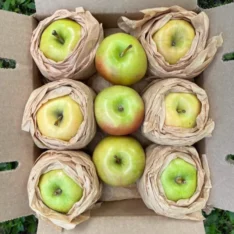
Select options
This product has multiple variants. The options may be chosen on the product page
Organic Hidden Rose Apples|Unique and Fresh Available Online in Australia
$15.00 – $310.00Price range: $15.00 through $310.00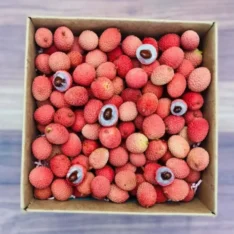
Select options
This product has multiple variants. The options may be chosen on the product page
Lychee Tropical Fruit Box|Fresh and Juicy Lychees Available Online in Australia
$16.00 – $350.00Price range: $16.00 through $350.00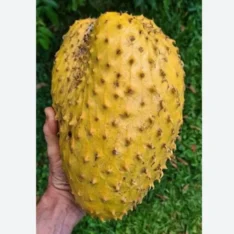
Select options
This product has multiple variants. The options may be chosen on the product page
Golden Soursop| Premium Golden Guanabana Fruit Available in Australia
$14.00 – $275.00Price range: $14.00 through $275.00
Select options
This product has multiple variants. The options may be chosen on the product page
Cacao Gift Box|Available in Australia
$8.00 – $175.00Price range: $8.00 through $175.00
Select options
This product has multiple variants. The options may be chosen on the product page
Fresh Tropical Ginger Box|Premium Quality Available Online in Australia
$40.00 – $140.00Price range: $40.00 through $140.00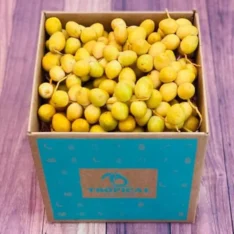
Select options
This product has multiple variants. The options may be chosen on the product page
Buy Yellow Barhi Dates Fruit Box Australia | Fresh & Crunchy Sweet Delight
$13.00 – $315.00Price range: $13.00 through $315.00
Select options
This product has multiple variants. The options may be chosen on the product page















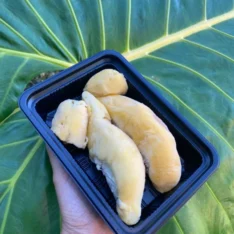
Reviews
There are no reviews yet.